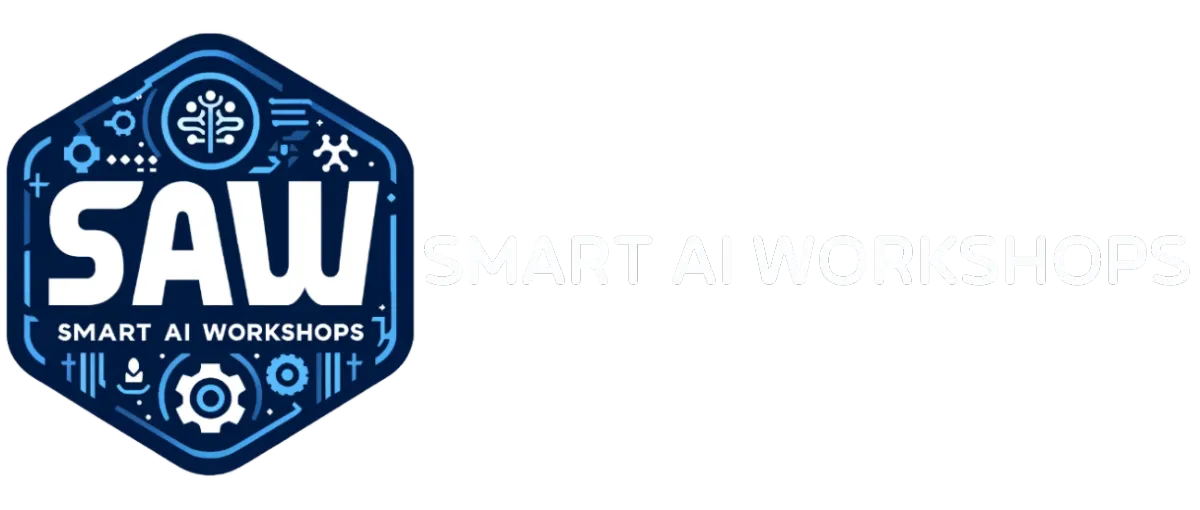Smart Class Insights
Leadership, automation, and the future of work — simplified

The Workslop Epidemic
Why Your AI Tools Are Making You Less Productive (And What to Do About It)
You bought into the AI productivity promise. ChatGPT would make you superhuman. Claude would handle your writing. Gemini would revolutionize your research. So why are you working harder than ever?
If this sounds familiar, you're not alone. A groundbreaking Stanford study just revealed what millions of workers already suspected:77% report that AI has actually increased their workload. Welcome to the AI productivity paradox—and the hidden phenomenon researchers are calling "context collapse."
The "Workslop" Problem No One's Talking About
Let me introduce you to a term that's about to change how you think about AI at work: workslop.
Stanford researchers coined this word to describe something you've definitely encountered—AI-generated content that looks professional and comprehensive but is actually hollow busy work that creates more problems than it solves.
You know that feeling when you receive a beautifully formatted 3-page email that somehow says absolutely nothing actionable? Or when a colleague sends you an AI-generated report that looks thorough but misses every crucial detail specific to your project?
Congratulations. You've been workslopped.
The Hidden Cost of AI Busy Work
The numbers are jaw-dropping:
40% of workers encountered workslop in the past month
Each incident costs an average of 1 hour and 56 minutes to deal with
For a mid-sized company, this translates to $9 million in lost productivity annually
But here's the kicker: when people receive workslop, 53% feel annoyed, 38% feel confused, and 22% feel outright offended. Nearly half start questioning their colleagues' competence and creativity.
AI isn't just wasting time—it's eroding workplace trust.
Why You're Drowning in Browser Tabs
Here's a question: How many ChatGPT tabs do you have open right now?
If you're like most knowledge workers, the answer is "too many." You've got:
5-6 ChatGPT tabs for different projects
2-3 Claude instances for various tasks
Multiple Gemini sessions for research
That Perplexity tab you forgot about
Various specialized AI tools scattered across your browser
This is context switching hell.
Research shows we toggle between applications nearly 1,200 times per day, spending almost 4 hours per week—equivalent to 5 working weeks annually—just reorienting ourselves after switching tools.
Every time you jump between AI tools, you have to:
Reload context: Re-explain your project from scratch
Navigate different interfaces: Remember which prompts work where
Track conversation threads: "Wait, which AI told me what?"
Reconcile conflicting advice: When Claude disagrees with ChatGPT
One developer put it perfectly: "I often end up tackling issues again because I forget previous breakthroughs. If I get sidetracked, returning to my work can mean losing track of where I left off."
The Shocking Truth: AI Makes Developers 19% Slower
Want to know the most counterintuitive finding? A rigorous study by Model Evaluation & Threat Research found thatexperienced developers complete tasks 19% slower when using AI tools—despite expecting 40% productivity gains.
Let that sink in. The tools designed to make us faster are literally making us slower.
Why? Because we're trapped in what I call the "capability-reliability gap." AI can handle broad tasks, but succeeds only about 50% of the time. This means:
Debugging AI output: You spend ages fixing subtle errors in AI-generated code
Verification overhead: Every suggestion needs human validation
Context reconstruction: AI forgets everything between conversations
Tool-switching penalties: Jumping between AI and your actual work destroys flow
Beyond Personal Productivity: When Organizations Lose Their Memory
The context collapse problem goes deeper than individual frustration. It's creating "institutional amnesia" across entire organizations.
Think about it: Where do your breakthrough AI insights go? They're scattered across:
Personal ChatGPT conversations (that you can't search effectively)
Team Slack channels with random AI bot interactions
Department-specific AI tool outputs
Individual AI subscriptions ("shadow AI")
Your company's collective intelligence is fragmenting across a dozen disconnected AI conversations.
Meanwhile, quality control has shifted from "create better work" to "fix AI work." Instead of AI making your outputs better, it's pushing the burden downstream to recipients who must:
Fact-check AI-generated content
Fill in missing context
Reconcile conflicting information
Figure out what was human-created vs. AI-generated
The Real Solution (It's Not Better Prompts)
Here's what everyone gets wrong: The standard advice is "learn better prompting." But context collapse isn't a user training problem—it's a systems integration challenge.
1. Design Workflows Around AI, Not Despite It
Stop adding AI tools to broken processes. Instead:
Create context persistence systemsthat maintain project memory across tools and sessions. Use project management platforms that integrate with AI rather than treating each AI conversation as isolated.
Establish AI handoff protocolsthat clearly define when work transitions between AI assistance and human judgment. Make it explicit when something needs human review before sharing.
Implement unified interfacesthat reduce tool-switching. Use platforms like Claude Projects or ChatGPT Teams that maintain context, rather than juggling multiple browser tabs.
2. Build Quality Gates (Not Quality Hopes)
Mandate human reviewfor AI-generated content before it leaves your inbox. If you wouldn't send a rough draft to your boss, don't send AI output to colleagues.
Add context completeness checks. Before sharing AI work, ask: "Does this include enough background for the recipient to understand and act on it?"
Clearly label AI contributions. Stop pretending AI work is human work. Transparency builds trust; mystery breeds suspicion.
3. Train for Integration, Not Just Usage
Forget generic "AI literacy" training. Instead:
Teach task-appropriate AI use. Some tasks benefit from AI; others require human cognition. Learn the difference.
Focus on workflow integration. How do you minimize context switching? How do you maintain project continuity across AI interactions?
Establish team norms. What are your collaboration protocols when AI is involved? How do you share AI insights effectively?
What Success Actually Looks Like
The organizations solving context collapse aren't just using AI differently—they're working differently.
They measure what matters: Not just adoption rates, but actual productivity, quality, and recipient satisfaction. They track context switching penalties and cognitive load effects.
They implement systematically: Instead of company-wide AI mandates, they run careful pilots that evaluate real impact on human work patterns.
They design human-centric workflows: AI handles information gathering and initial drafts. Humans maintain judgment, context, strategy, and relationships. The goal isn't to replace human intelligence—it's to amplify it.
Your Next Steps
Ready to escape the AI productivity trap? Start here:
This week: Audit your AI tool usage. How many tabs do you have open? How much time do you spend re-explaining context? Track this for three days.
This month: Implement one context persistence system. Use ChatGPT Projects, Claude Projects, or similar tools that maintain conversation history instead of starting fresh each time.
Next quarter: Establish quality gates. Create a simple checklist for AI-generated content before sharing: Does it include sufficient context? Is it clearly labeled? Would a colleague find this actionable?
The Real AI Revolution
The AI productivity revolution isn't failing—it's just beginning. But the winners won't be those who use AI most. They'll be those who solve context collapse first.
The productivity gains are real. But they require fundamentally rethinking work itself, not just adding AI to existing processes.
The question isn't whether AI will eventually deliver on its productivity promises. The question is whether you'll solve context collapse before your competitors do—or whether you'll remain trapped in workslop hell, working harder while falling further behind.
What's your experience with AI productivity tools? Have you noticed the context collapse problem in your organization? Share your thoughts and let's figure this out together.
Hear From Our Clients
Kejohnna Owens

Debra Love

Zana Miller

Bob Frierson

Jacob

Youth Entrepreneur

Workshop Testimonial

Workshop Testimonial

Workshop Testimonial

Smarter Systems, Bigger Dreams
© 2025 Lifting Dreams Institute LLC - All Rights Reserved
© 2025 Lifting Dreams Institute LLC. - All Rights Reserved

